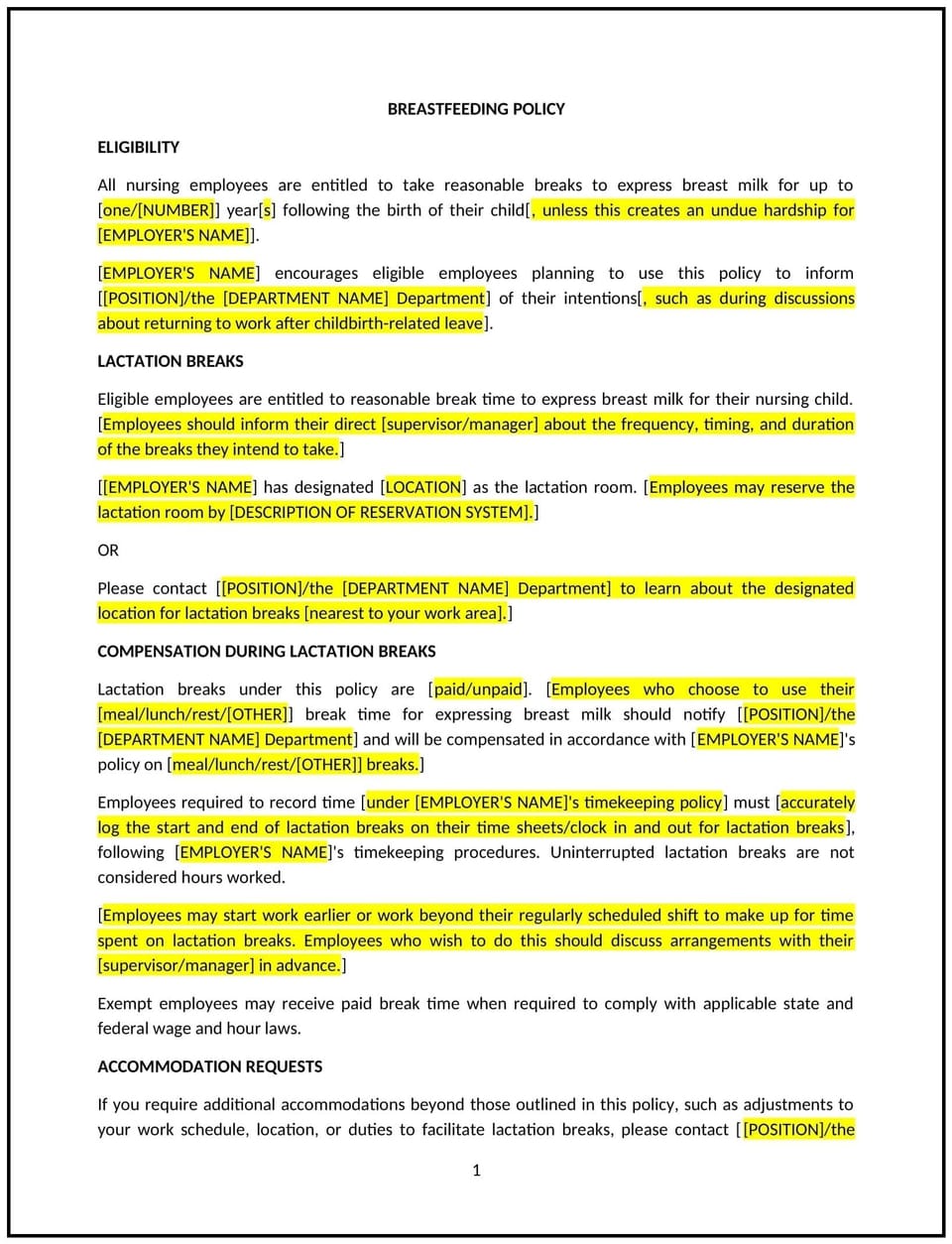Breastfeeding break policy (Oregon): Free template

Breastfeeding break policy (Oregon)
This breastfeeding break policy is designed to help Oregon businesses establish guidelines for employees who need to express breast milk at work. It outlines procedures for providing breaks, private spaces, and support for nursing mothers.
By adopting this policy, businesses can support working mothers, comply with Oregon’s laws, and promote a family-friendly workplace.
How to use this breastfeeding break policy (Oregon)
- Define breastfeeding breaks: Clarify what constitutes a breastfeeding break and the duration of breaks.
- Provide private spaces: Specify the availability of private, clean, and comfortable spaces for expressing breast milk.
- Address scheduling: Outline procedures for scheduling breastfeeding breaks to minimize disruption to work.
- Ensure support: Provide resources and support for nursing mothers, such as access to refrigeration for storing breast milk.
- Train managers: Educate supervisors on handling breastfeeding break requests and maintaining workflow.
- Review and update: Assess the policy annually to ensure it aligns with evolving business needs and legal requirements.
Benefits of using this breastfeeding break policy (Oregon)
This policy offers several advantages for Oregon businesses:
- Supports working mothers: Demonstrates a commitment to supporting nursing mothers in the workplace.
- Enhances morale: Provides employees with the necessary resources and support, boosting morale and retention.
- Aligns with regulations: Supports compliance with Oregon’s laws regarding breastfeeding breaks.
- Reduces stress: Allows nursing mothers to balance work and family responsibilities, improving overall well-being.
- Builds trust: Shows employees that the business values their personal well-being and family commitments.
Tips for using this breastfeeding break policy (Oregon)
- Communicate the policy: Share the policy with employees and include it in the employee handbook.
- Provide training: Educate managers on handling breastfeeding break requests and maintaining workflow.
- Monitor compliance: Regularly review breastfeeding break requests to ensure adherence to the policy.
- Address issues promptly: Take corrective action if breastfeeding break requests are mishandled or denied improperly.
- Update regularly: Assess the policy annually to ensure it aligns with evolving business needs and legal requirements.
Q: How does this policy benefit businesses?
A: By supporting nursing mothers, businesses can enhance morale, reduce stress, and comply with Oregon’s laws.
Q: What types of spaces are typically provided for breastfeeding breaks?
A: Businesses should provide private, clean, and comfortable spaces for expressing breast milk, such as a dedicated lactation room.
Q: How long are breastfeeding breaks typically provided?
A: Breastfeeding breaks are typically provided as needed, with a duration sufficient to express breast milk.
Q: What should businesses do if a breastfeeding break conflicts with business needs?
A: Businesses should work with the employee to find a mutually agreeable solution or adjust the break schedule if possible.
Q: How often should businesses review this policy?
A: Businesses should review the policy annually or as needed to ensure it aligns with evolving business needs and legal requirements.
This article contains general legal information and does not contain legal advice. Cobrief is not a law firm or a substitute for an attorney or law firm. The law is complex and changes often. For legal advice, please ask a lawyer.


